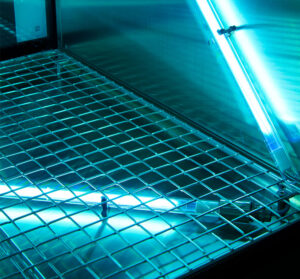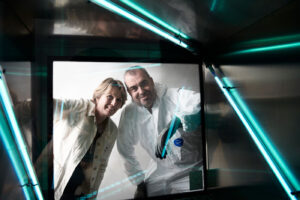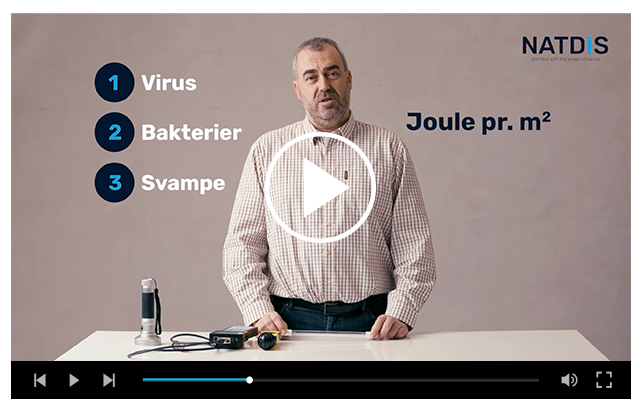When bacteria or viruses are exposed to UVC light, UVC photons destroy the hydrogen bonds in the DNA or RNA. This prevents the cell from being able to reproduce, and it will be inactivated and then die.
UVC technology has been documented for more than 100 years, and therefore, there is a large amount of scientific material that can be used for dose calculations. It is also known that the optimum wavelength for disinfection is 264nm, which is why the aim is for a lamp peak that is as close to the wavelength as possible.

UVC does not care about temperature and pH
UVC light is powerful because it works in cold and warm environments, whether the bacteria are in solid, liquid or airborne form. Therefore it is a really good match for many disinfection needs, where we like to avoid contact, chemicals and waiting time.
In fact, you cannot over-treat with UVC light, and should there be particles that hide bacteria from the light, a low-grade treatment cannot risk mutation or resistance.
However, it is important to choose the right type of UVC light for the task, as our product palette contains bulbs that perform optimally in the different environments, such as cold, warm, humid or dry.
Alone or in combination with something else?
The UVC light can easily solve a large number of disinfection tasks alone – however, it is light, so particles, dirt and dust must be removed or treated. We make systems with air ventilation, where surfaces on items are “flushed” with air, which is filtered and recycled in closed systems. We also offer combination solutions, where the UVC lamps are the last part of a washing and cleaning process, ensuring a completely clean end product, without basis for unfortunate growths. Completely or partially chemical-free.
Find our solutions in all industries, from biosecurity solutions in agriculture to pharmaceutical production and food production in all categories.
Can we help?
If you require disinfection but have not seen the solution yet, call 22 680 680 or write to us.
We are always ready to offer a NATDIS solution using UVC light, tailored to your specific needs and wishes.
Escherichia coli, Salmonella typhimurium, Penicillium roqueforti and all the others
We are familiar with them and many others.
If you need disinfection, we will try to identify which bacterium, virus or fungus we should treat. There is a big difference in how large a dose of UVC is necessary to neutralise different microorganisms.
This is something we typically know, but if we find ourselves in unfamiliar territory, a test setup can almost always identify the dose.
When we look at the UVC dose, it is a question of what log value is desired in the disinfection – translated into ordinary language, log-1 is a 90% reduction of a given amount of organisms and log-4 is 99.99% reduction.
In some environments log-1 is the right solution, and in other environments we want 99.999%. You decide, but for every log reduction, the energy requirement is doubled, so this is obviously an important decision.
UVC power is expressed in watts (W) and is often stated as watt per square meter (W/m²). When we talk about UVC dose, time must be included. Here we multiply W by time (t) in seconds and get joules per square meter (J/m²).
Natural Disinfection – completely without chemicals
When we use UVC correctly, we can get very effective disinfection of liquids, air and on surfaces – completely without chemistry. There is no contact and no requirement for after treatment processes (ventilation, etc.), as our lamps are ozone-free and autonomous systems can be created with a high level of monitoring and log options.
Same treatment every time – completely safe.

